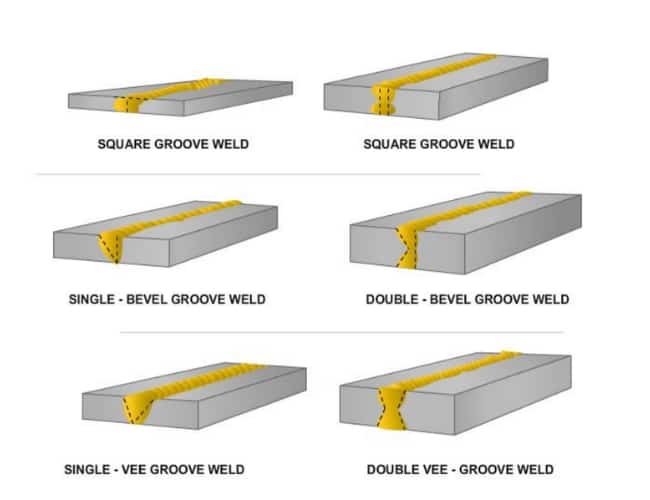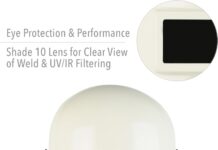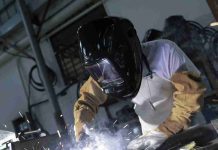We have all heard of welding, but have you ever wondered which type of welding is the most challenging? We have delved into the world of welding to uncover the answer to this burning question. From intricate and precise TIG welding to the intense and physically demanding underwater welding, each type of welding presents its own set of challenges. Join us as we explore the toughest welding techniques and gain a newfound appreciation for the skill and dedication required in this profession.
Introduction
Welcome to our comprehensive guide on different types of welding! In this article, we will explore various welding techniques and delve into the advantages and challenges associated with each method. Whether you’re an experienced welder or just starting out, we hope this guide will provide valuable insights into the world of welding.
Tungsten Inert Gas (TIG) Welding
Overview
Tungsten Inert Gas (TIG) welding, also known as Gas Tungsten Arc Welding (GTAW), is a precise and versatile welding technique. It involves using a non-consumable tungsten electrode to create the weld, which is protected by an inert gas, such as argon or helium.
Technique
TIG welding requires skill and precision. The welder controls the heat by foot or hand, regulating the arc and adding filler material as needed. This technique offers excellent control over the weld pool, allowing for precise and clean welds, even in thin materials.
Advantages
One of the major advantages of TIG welding is its ability to weld a wide variety of metals, including stainless steel, aluminum, titanium, and copper alloys. Additionally, TIG welding produces high-quality welds with minimal spatter and distortion. It also allows for welding in all positions, giving it a distinct advantage over other techniques.
Challenges
TIG welding can be challenging due to its slower welding speed compared to other methods. It also requires a high level of skill and dexterity to manipulate the filler rod and maintain a stable arc. In addition, TIG welding is not suitable for thick materials and may require multiple passes for deeper welds.
Shielded Metal Arc Welding (SMAW)
Overview
Shielded Metal Arc Welding (SMAW), commonly known as stick welding, is one of the oldest and most widely used welding techniques. It involves the use of a coated electrode that acts as both the filler material and the flux.
Technique
To perform SMAW, the welder strikes an arc between the electrode and the workpiece, melting the tip of the electrode and creating a molten weld pool. The flux coating on the electrode creates a protective shield, preventing atmospheric contamination.
Advantages
SMAW is a versatile method that can be used in various applications and environments, including outdoor work and structural repairs. It is also suitable for welding different materials, such as steel, cast iron, and stainless steel. SMAW is relatively easy to learn and requires minimal equipment, making it accessible to beginners.
Challenges
Stick welding can be more challenging than other methods due to its slower welding speed and lower deposition rates. The need to manually change and maintain electrodes can also interrupt the welding process. Additionally, SMAW produces more spatter and slag compared to other techniques, requiring additional clean-up efforts.
Gas Metal Arc Welding (GMAW/MIG)
Overview
Gas Metal Arc Welding (GMAW), also known as Metal Inert Gas (MIG) welding, utilizes a consumable wire electrode and a shielding gas to protect the weld area from atmospheric contamination.
Technique
In GMAW, the welding machine feeds a continuous wire through a welding gun, which is then melted by an electric arc to form the weld. A shielding gas, typically a mix of argon and carbon dioxide, is released to prevent oxidation and ensure a clean weld.
Advantages
GMAW is known for its high welding speed, making it suitable for production environments and large-scale projects. It provides good control and versatility, allowing for welding in various positions and materials, including stainless steel, mild steel, and aluminum. Furthermore, GMAW produces minimal slag, reducing post-weld clean-up.
Challenges
While GMAW is relatively easy to learn compared to other methods, it can be challenging to control and master due to factors such as wire feed rate, voltage, and travel speed. The need for a constant supply of shielding gas and consumable wire can also increase operating costs.
Flux-Cored Arc Welding (FCAW)
Overview
Flux-Cored Arc Welding (FCAW) is a variation of GMAW that uses a tubular wire filled with flux as the electrode and a shielding gas to protect the weld pool.
Technique
The welding process is similar to GMAW, with the difference being the addition of flux within the electrode. The flux helps in creating a protective shield and providing additional alloying elements to the weld.
Advantages
FCAW is ideal for outdoor welding due to its ability to produce high-quality welds even in windy conditions. It offers good penetration and deposition rates, making it suitable for welding thick materials. FCAW also eliminates the need for a shielding gas cylinder, reducing equipment costs.
Challenges
While FCAW is more tolerant of contaminants like rust and dirt compared to other methods, it can produce more smoke and fumes due to the flux. Disposing of the flux-cored wire can also be an environmental concern. Additionally, FCAW may require more post-weld cleaning and slag removal.
Submerged Arc Welding (SAW)
Overview
Submerged Arc Welding (SAW) is a highly efficient welding technique that involves the formation of an arc between a continuously fed electrode and the workpiece, while a layer of granular flux covers the weld zone.
Technique
The welding process occurs beneath a layer of flux, which provides a protective atmosphere and prevents spatter. SAW is commonly used for welding thick materials, such as pressure vessels, pipes, and heavy-duty structural components.
Advantages
SAW is known for its high deposition rates, making it ideal for large-scale production welding. It provides excellent weld quality, deep penetration, and good control over the arc. Additionally, SAW produces low levels of fume and noise, contributing to a safer working environment.
Challenges
The primary challenge of SAW is its limitation to flat or horizontal welding positions due to the reliance on gravity to contain the flux. The initial setup for SAW can also be more complex and time-consuming compared to other methods. Moreover, the requirement for a flux recovery system adds to the overall equipment cost.
Electroslag Welding (ESW)
Overview
Electroslag Welding (ESW) is a highly efficient welding process specifically designed for vertical welding of thick materials.
Technique
ESW utilizes a consumable electrode and a water-cooled copper shoe to initiate the welding process. A granulated flux is applied, which melts and forms a slag pool that shields the weld area. This process produces a single-pass, high-quality weld.
Advantages
ESW is known for its high welding speed and ability to weld extremely thick plates in a single pass, reducing the need for multiple welding runs. It produces welds with excellent mechanical properties and requires minimal operator skill compared to other techniques.
Challenges
The main challenges of ESW lie in its limited application to vertical welding positions and the need for costly and complex equipment, such as the copper shoe and specialized power sources. Additionally, the need for precise control of variables, such as flux composition and cooling, can add complexity to the process.
Atomic Hydrogen Welding (AHW)
Overview
Atomic Hydrogen Welding (AHW) is a unique welding technique that utilizes the heat generated by an electric arc between two tungsten electrodes in a hydrogen-rich atmosphere.
Technique
The electric arc established between the electrodes ionizes the surrounding hydrogen gas, creating a highly localized and intense heat source. A filler rod may or may not be used, depending on the application. AHW is mainly used for welding reactive metals, such as titanium, allowing for clean, high-quality welds.
Advantages
AHW produces welds with exceptional purity and strength, making it suitable for critical applications in industries like aerospace and nuclear power. It offers precise control and good heat distribution, resulting in minimal distortion and low hydrogen-induced cracking.
Challenges
AHW is a specialized technique that requires careful control of hydrogen gas and precise electrode alignment. The process can be slower compared to other methods and requires a high level of skill and expertise. Additionally, operating AHW equipment can be expensive due to the need for high-purity hydrogen gas.
Electron Beam Welding (EBW)
Overview
Electron Beam Welding (EBW) is a highly precise and concentrated welding technique that uses a high-velocity electron beam to create a weld.
Technique
The electron beam is generated by accelerating electrons through a vacuum chamber and focusing them onto the workpiece. The high energy of the electron beam causes rapid melting and solidification, creating a narrow and deep weld.
Advantages
EBW offers exceptional control, allowing for precise welding in highly sensitive applications, such as medical devices and aerospace components. It produces welds with minimal distortion and HAZ (Heat Affected Zone). EBW is also versatile, as it can weld a wide range of materials with varying thicknesses.
Challenges
EBW requires specialized equipment and a vacuum chamber, making it an expensive process. It also requires extensive operator training due to the complexity of controlling the electron beam. Moreover, the size limitations of EBW equipment can restrict its use in certain applications.
Conclusion
In conclusion, the world of welding offers a diverse range of techniques, each with its own advantages and challenges. From the precision of Tungsten Inert Gas (TIG) welding to the versatility of Gas Metal Arc Welding (GMAW/MIG), there is a technique to suit every project and skill level.
It is essential for welders to understand the characteristics and requirements of each welding method to achieve high-quality and efficient welds. While some techniques may be more challenging than others, with practice and experience, any welder can master the art of welding.
Remember, welding requires not only technical skill but also a passion for craftsmanship. So, whether you’re a novice welder or an experienced professional, embrace the challenges and continue to hone your skills in the world of welding!









































